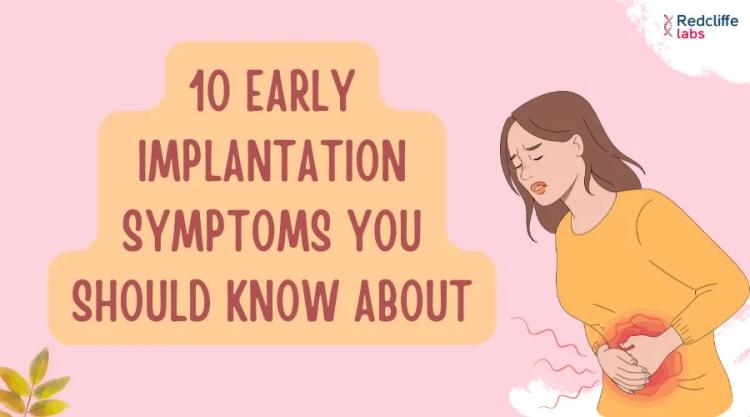How To Manage Stress And Anxiety Through Breathing Techniques

Medically Reviewed By
Dr. Ragiinii Sharma
Written By Kirti Saxena
on Oct 3, 2023
Last Edit Made By Kirti Saxena
on Jan 9, 2025

Imagine stress and anxiety like having a heavy backpack full of rocks. It's tough to carry around all day, right? That's what stress and anxiety can feel like. Well, we all have ups and downs in our lives, which sometimes create stress and anxiety situations. They might give you a headache, make your heart beat fast, or make it hard to sleep or concentrate. These feelings can be like big, heavy clouds that block the sunshine of our happiness and well-being. At this point, we felt confused and didn't know what to do to handle the situation. But don't worry; we'll show you some of the best breathing exercises to help calm your mind and help reduce stress. So, get ready to learn how to bring more peace, calm, and happiness into your life through breathing.
7 Breathing Exercises help you keep stress-free
1. Deep Breathing:
Deep breathing is a powerful way to calm your mind and body. The idea is to breathe in slowly through your nose, filling your lungs like a balloon, and then breathe out slowly through your mouth. While performing this exercise, focus on your breath and let go of any worries.
Try it:
- Sit or lie down comfortably.
- Close your eyes, breathe in slowly for a count of four, hold for a count of four, and then exhale for a count of four.
- Repeat a few times, and you'll feel more peaceful.
2. Diaphragmatic Breathing:
Diaphragmatic breathing is all about using your diaphragm, a muscle just below your lungs, to take deep breaths. This technique helps you breathe more efficiently and relax better. Start by placing one hand on your chest and the other on your belly. Practice this for a few minutes daily, and it can become a natural way to reduce stress and anxiety.
Try it:
- Breathe slowly through your nose, letting your belly rise like a balloon.
- Then, exhale through your mouth, feeling your belly fall. Keep your chest still.
3. 4-7-8 Technique:
The 4-7-8 technique is simple but effective in calming your nerves and helping you fall asleep faster. Inhale through your nose for a count of four, then hold your breath for seven. Finally, exhale completely through your mouth for a count of eight. It helps relax your body and mind by increasing the oxygen supply and slowing your heart rate. Repeat this cycle a few times before bedtime or when you need to unwind.
Try it:
- Sit on a chair, keeping your back straight, and then close your eyes and relax your facial muscles.
- Start by exhaling through your mouth, making a gentle whooshing sound. Try to get all the air out of your lungs.
- Close your mouth and inhale quietly through your nose, counting to four in your head. Imagine filling your lungs with fresh, clean air.
- Repeat the process and hold your breath for seven seconds and then 8 seconds.
- Try to practice the 4-7-8 technique at least twice a day.
4. Box Breathing:
Box breathing, or square breathing, is like drawing a square with your breath. It involves a four-step process where each step is of equal duration, creating a "box" pattern with your breath. It's a simple yet effective method for reducing stress and promoting focus and relaxation.
Try it:
- Sit or stand with your back straight.
- Inhale slowly and deeply through your nose while silently counting to four and holding it. Imagine filling your lungs with fresh air as you do this.
- Exhale slowly and completely through your mouth for the same four counts. Focus on releasing tension and stress as you breathe out.
- After exhaling, pause for another four counts before beginning the next cycle.
5. Alternate Nostril Breathing:
This technique balances the flow of air in and out of your nostrils, which can help harmonize your mind. This exercise helps to calm the left and right hemispheres of the brain, promoting calmness and mental clarity.
Try it:
- Sit in a comfortable and upright position. You can use your right thumb to close off your right nostril and your right ring finger to close off your left nostril.
- Close your eyes and take a few deep, calming breaths to relax your mind and body.
- Repeat the process with the left nostril and do it in several cycles.
6. Diaphragmatic Breathing
This is a type of deep breathing technique that focuses on using your diaphragm, a large muscle located beneath your lungs, to facilitate more efficient and effective breathing. It enhances oxygen exchange, allowing more oxygen to enter the lungs and be transported throughout the body, increasing energy levels.
Try it:
- Sit or lie down in a relaxed posture.
- Put one hand on your chest and the other on your abdomen (belly).
- Breathe slowly through your nose, allowing your abdomen to rise as you fill your lungs with air.
- Exhale slowly through your mouth, emptying your lungs and letting your abdomen fall.
- Concentrate on the rhythm of your breath, let go of any stressful thoughts, and repeat the pattern multiple times.
7. Lion's Breath:
Lion's breath is a fun and energizing technique. It's a great way to release tension and feel refreshed. The forceful exhalation and the act of letting out a loud "haa" sound can help release built-up tension and stress, leaving you feeling more relaxed.
Try it:
- Inhale deeply through your nose, counting to four in your mind.
- After completing the four-count inhale, pause and hold your breath for another four counts.
- As you exhale, forcefully and audibly exhale through your mouth while sticking out your tongue as far as possible. Open your eyes wide and create a "haa" sound. Imagine you're releasing stress and tension with each lion-like exhale.
- After the lion's exhalation, pause and hold your breath for another four counts. Keep your lungs empty during this pause.
Health Benefits Of Breathing Exercises
Breathing techniques make you feel better when stress and anxiety bother you. Here's why they're beneficial for your health:
- Improves Immunity: Breathing exercises can make your body's defense system stronger, helping you stay healthy and fight off illnesses.
- Increases Energy: Breathing exercises boost your energy, like recharging a tired battery.
- Lowers Blood Pressure: Breathing exercises can make your heart work better, which helps keep your blood pressure in a healthy range.
- Improves Digestion: They help your stomach and gut work smoothly, making it easier to digest food.
- Relieves Pain: These exercises can ease pain and discomfort in your body, like a gentle massage from the inside.
- Decreases Stress, Increases Calm: This calms your mind, reduces stress, and helps you feel peaceful and relaxed.
- Better Sleep: Breathing tricks help you fall asleep faster and sleep more peacefully.
How To Add Breathing Exercises In Daily Life?
- Morning Routine: Start your day with a breathing exercise. As soon as you wake up, take a few minutes to practice deep breathing or a quick round of box breathing.
- Commute time: If you commute to work or school, use this time for breathing exercises. Practice diaphragmatic breathing while sitting on the bus, train, or in your car.
- Work Breaks: You can do breathing exercises during work or study breaks. Every hour, take a 2-5 minute break to focus on your breath, relieving stress and boosting productivity.
- Mealtime: Before meals, practice a few minutes of mindful breathing. It helps improve digestion and allows you to savor your food.
- Exercise Warm-up: Use breathing exercises as part of your exercise routine. Before a workout, engage in deep breathing to oxygenate your muscles and improve performance.
- Bedtime Ritual: Wind down with breathing exercises before sleep. This can include the 4-7-8 technique or progressive muscle relaxation.
Breathing Exercises For Better Health
In the fast-paced world we live in, managing stress and anxiety has never been so important.
These feelings can weigh us down, affecting our physical and mental health. However, there is hope, and the answer lies in the simple yet powerful practice of breathing techniques.
These exercises offer us a lifeline to a calmer, more peaceful existence. These simple techniques calm our racing hearts, clear the fog of worry, and boost our energy. So, let's not wait any longer. It's time to embrace the significance of managing stress and anxiety in our lives. Add these techniques to your daily routines. By doing so, you can reduce stress and anxiety and improve your overall health.



